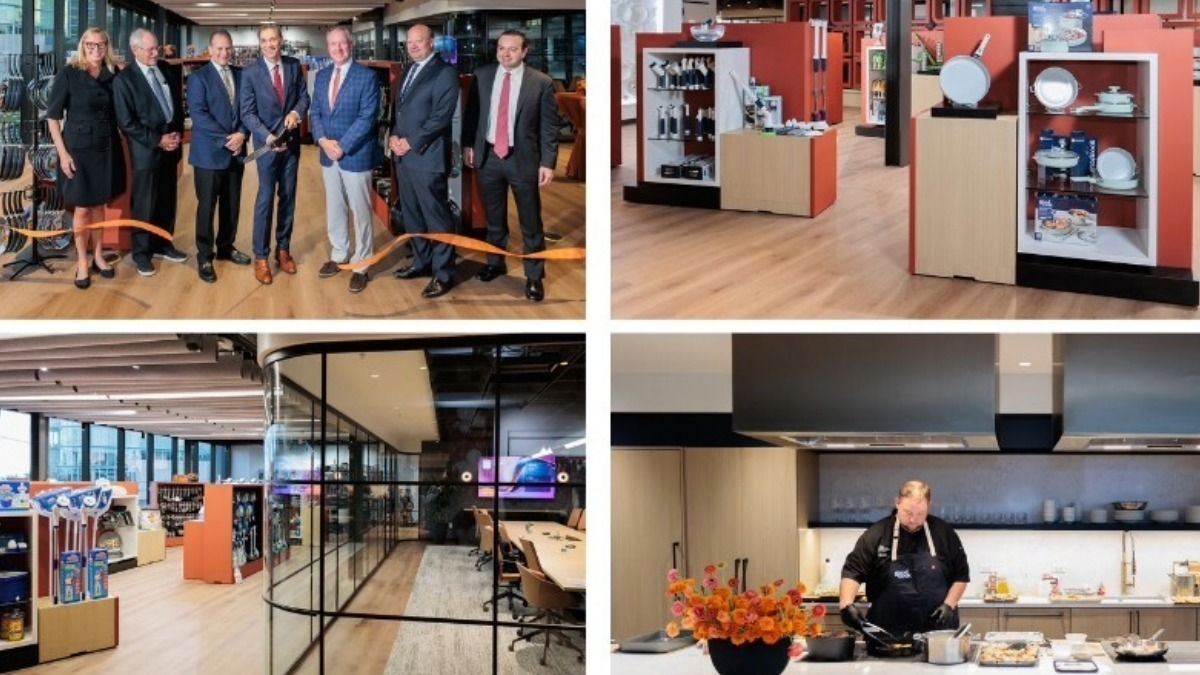By Gilbert Broco, president, CI Group
In the evolving landscape of business, where competition is fierce and talent is sought after, fostering a strong company culture has become a critical component for success. While the concept of company culture encompasses a multitude of factors, one often overlooked but immensely impactful aspect is workplace design. The layout, ambiance and functionality of a workspace can serve as a catalyst for nurturing a vibrant and cohesive company culture.
In recent years, there has been a paradigm shift in how organizations perceive their physical environments. No longer merely a backdrop for daily operations, the workplace is now recognized as a powerful tool for shaping employee attitudes, behaviors and interactions. Forward-thinking companies are leveraging this understanding to create environments that not only enhance productivity but also foster a sense of belonging, purpose and shared identity among employees.
A well-designed workplace can instill a sense of pride and ownership among employees, reinforcing their connection to the organization’s mission and values. For instance, incorporating elements of the company’s branding, and history, into the office space can serve as constant reminders of its identity and heritage, fostering a deeper sense of loyalty and commitment among employees.
Moreover, workplace design can play a pivotal role in promoting collaboration and innovation, two essential pillars of a thriving company culture. Open floor plans, communal areas and flexible workspaces encourage spontaneous interactions and idea-sharing among employees, breaking down silos and promoting a culture of collaboration across teams and departments. Additionally, providing employees with a variety of work settings – from quiet zones for focused work to collaborative spaces for brainstorming sessions – empowers them to choose environments that best suit their tasks and preferences, thereby enhancing both productivity and creativity.
A thoughtfully designed workplace can contribute to employee well-being and satisfaction, which are integral components of a positive company culture. Natural light, ergonomic furniture, greenery and recreational spaces are not just amenities but investments in employee happiness and productivity. Research has shown that access to natural light and views of nature can boost mood, energy levels and cognitive function, while ergonomic furniture can reduce the risk of musculoskeletal issues and improve comfort during long work hours. By prioritizing employee well-being in the design process, organizations signal their commitment to creating a supportive and nurturing work environment which, in turn, fosters loyalty, engagement and job satisfaction among employees.
Workplace design can be a powerful tool for attracting and retaining top talent in today’s competitive job market. Millennials and Gen Z, who comprise a significant portion of the workforce, prioritize workplace culture and environment when choosing where to work. A visually appealing, innovative and employee-centric workspace can serve as a powerful recruitment tool, helping organizations stand out as employers of choice and attracting top talent who align with their values and culture. Similarly, a well-designed workplace can enhance employee retention by fostering a sense of belonging, fulfillment and pride in their workplace, reducing turnover rates and preserving institutional knowledge and expertise within the organization.
However, achieving an optimal workplace design that truly reflects and reinforces the desired company culture requires a strategic approach and ongoing commitment from leadership. It begins with a deep understanding of the organization’s values, goals and employee needs, which serve as guiding principles throughout the design process. Collaborating with design experts, architects and employees themselves can ensure that the final design reflects a balance of aesthetics, functionality and cultural alignment.
It is essential to recognize that workplace design is not a one-time endeavor but an ongoing evolution that adapts to the changing needs and dynamics of the organization. Regular assessments, feedback mechanisms and adjustments are necessary to ensure that the workplace continues to support and strengthen the desired company culture over time.
Workplace design is far more than just aesthetics; it’s a powerful tool for shaping and reinforcing company culture. By creating environments that inspire collaboration, promote well-being and reflect organizational values, companies can cultivate a culture that attracts top talent, fosters employee engagement and drives business success in the long run. As leaders, investing in the design of our workplaces is not just an expense but an investment in our most valuable asset – our people.

Gilbert Broco is president at CI Group, a contract furniture dealership with seven locations across the Southeastern United States. He served as the president of the IIDA Florida Central Chapter, in 2018, and has contributed as a Trustee of the International Interior Design Foundation for two terms, presently serving as the chair of the IIDA Foundation. Broco is engaged in various leadership roles within the Tampa Bay community. He holds a position on the Leadership Tampa Bay Board, where he spearheads Alumni Events as chair. He is a member of the USF Leadership and Innovation Forum of Tampa and the CEO Council of Tampa Bay.













